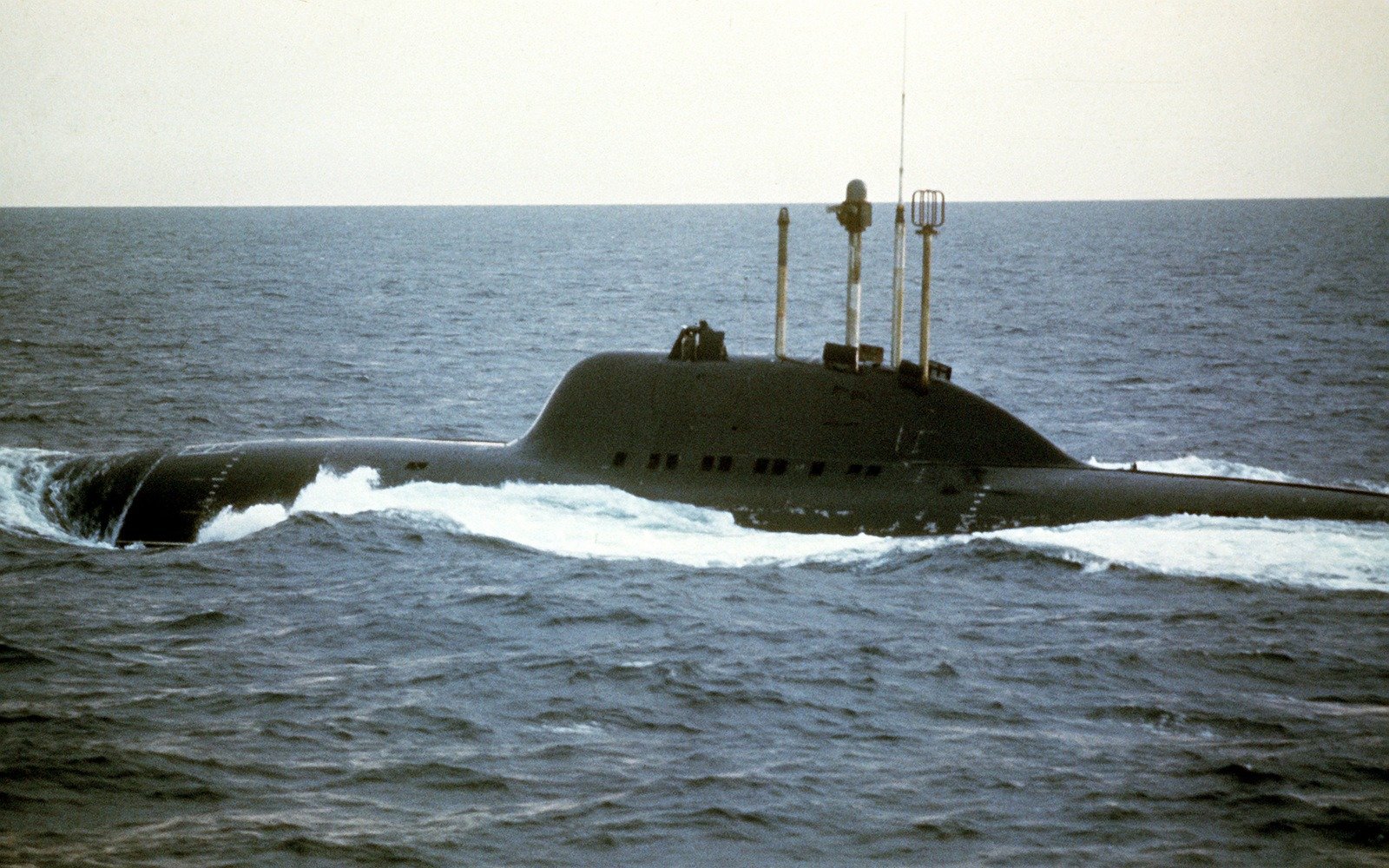Russia's Titanium Submarines: Faster and Could Out Dive U.S. Navy
During the Cold War, the Soviet Union sought an edge in undersea warfare by designing the Lira-class (Alfa) submarines with titanium hulls, which allowed for faster, deeper, and quieter operations.
What You Need to Know: During the Cold War, the Soviet Union sought an edge in undersea warfare by designing the Lira-class (Alfa) submarines with titanium hulls, which allowed for faster, deeper, and quieter operations.

-Despite the advantages of titanium, including its strength, lower weight, and resistance to corrosion, the U.S. Navy chose not to follow suit due to its high cost and complex manufacturing challenges.
-Instead, the U.S. focused on developing superior torpedoes and anti-submarine weapons, such as the MK 48 torpedo and Sea Lance missile.
-Ultimately, the limited success of the Soviet titanium subs validated the U.S. decision to prioritize affordability and practicality.
Why the U.S. Navy Rejected Titanium Submarines in the Cold War
The Soviet Union once thought it had an edge over the United States in undersea warfare during the height of the Cold War.
The Russians designed their Lira-class boats with titanium hulls that would allow the submarines to be better propelled and dive faster, deeper, and quieter. They could maybe even outfox incoming American and NATO torpedoes.
The U.S. Navy never followed suit as the titanium hulls were more expensive and more challenging to build. Let’s take a closer look at the pros and cons of titanium subs to see if the navy made a good choice to pass or if it made a bad mistake.
Could This Be the Soviet Sub That Would Dominate the Americans?
The Soviet Project 705 “Lira” (also called the Alfa) nuclear submarine was state of the art in the 1960s. It was going to reach speeds previously unattainable and be the quietest sub in the Russian navy. Titanium would be used for Lira hulls and a new lead-cooled reactor would power the ship to allow it to dive and turn quickly. The Lira-class was the fastest submarine ever built – able to reach 41 knots. It could quickly attain that speed and adroitly switch directions when needed.
Titanium Has Many Advantages
Titanium alloy is usually stronger than steel but weighs half as less. It is more expensive, up to three to five times more than steel. Titanium is also less corrosive in salt water. It can handle more pressure during deeper dives – all the way down to 2,200 feet. Fashioning titanium to make a hull is no easy feat. Welding is difficult and the slightest mistake during the welding phase could make the titanium brittle and less strong. Welders did their jobs in expensive facilities that had argon gas, making for dangerous work.

But Not Enough Pluses for the U.S. Navy
The United States was aware of the power, speed, and stealth of the Lira-class and took a close look at the titanium construction. Titanium is rare and costly compared to iron. Titanium is not easy to shape either. Welders would need an outside oxygen source during the workday. Any mis-step by the welders would create a sub that would be dangerous to take on deep dives. The higher pressure could compromise the weakened hull.
Just Build Better Torpedoes and Other Weapons for Undersea Combat
The U.S. Navy considered creating their own supply chain for titanium and determined the effort and cost would not be worth it. Instead, it looked to improve on undersea warfare capabilities instead of opting for a titanium made hull. The navy developed the MK 48 heavyweight torpedo that would take care of the Lira boats by going 63 knots. The British made a high-speed torpedo called the Spearfish. The Americans also started work on the Sea Lance anti-submarine missile that could carry a torpedo or depth charge to wreck a Lira-class.
Not as Dominant as Thought
The Soviets only produced seven Lira submarines. They had a complicated reactor that made repairs challenging. The titanium proved problematic as some boats experienced hull cracking creating costly and challenging fixes. The Liras were also not as quiet as the Soviets hoped even though the titanium was believed to be paramagnetic that would create a quieter ride. Despite being costly to maintain, they stayed in service until the end of the Cold War but were then decommissioned and scrapped.

The U.S. Navy Made the Right Decision
The U.S. Navy then made a good choice not to pursue titanium boats. The material is expensive and complicated to work with. Sometimes when pondering new designs in defense acquisition it is better to let your adversary jump out ahead and see where the weaknesses are and figure out the best way to counteract the advantages. The Russian boats were fast because of the titanium but they were not as quiet as advertised. The Americans felt that titanium was not worth the trouble and cost.
About the Author
Dr. Brent M. Eastwood is the author of Humans, Machines, and Data: Future Trends in Warfare. He is an Emerging Threats expert and former U.S. Army Infantry officer. You can follow him on Twitter @BMEastwood. He holds a Ph.D. in Political Science and Foreign Policy/ International Relations.
Image Credit: Creative Commons.


